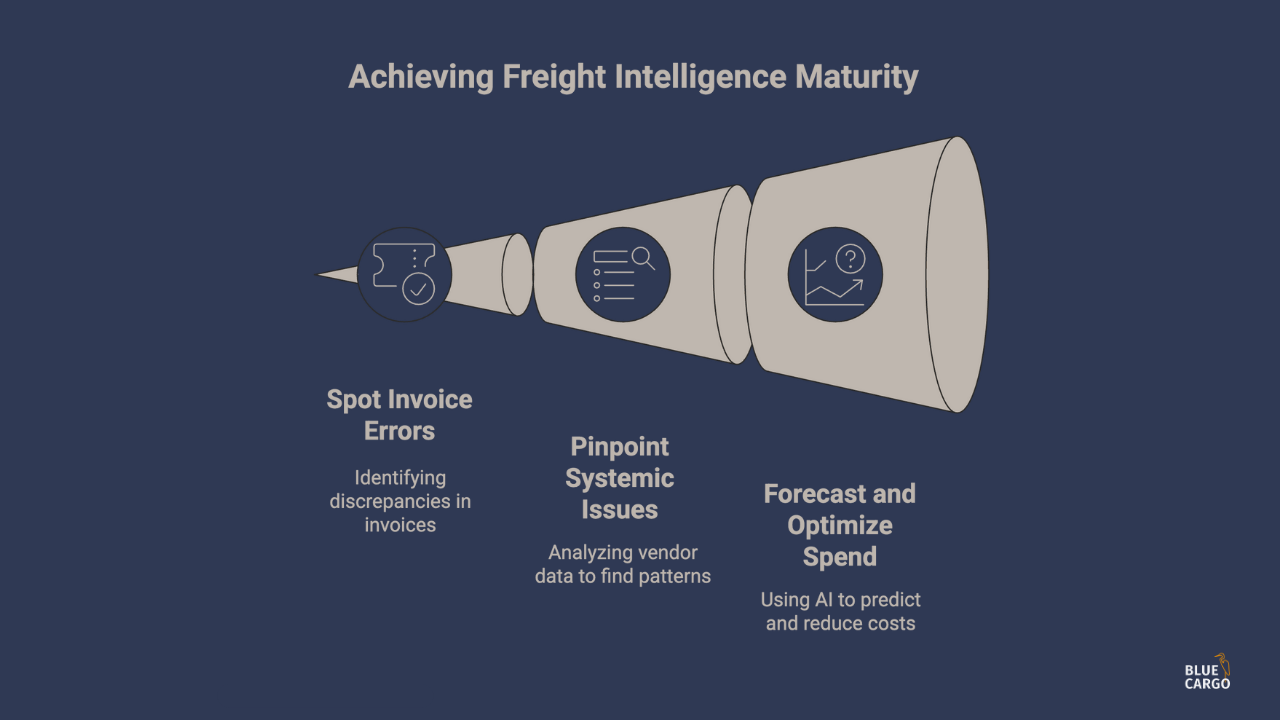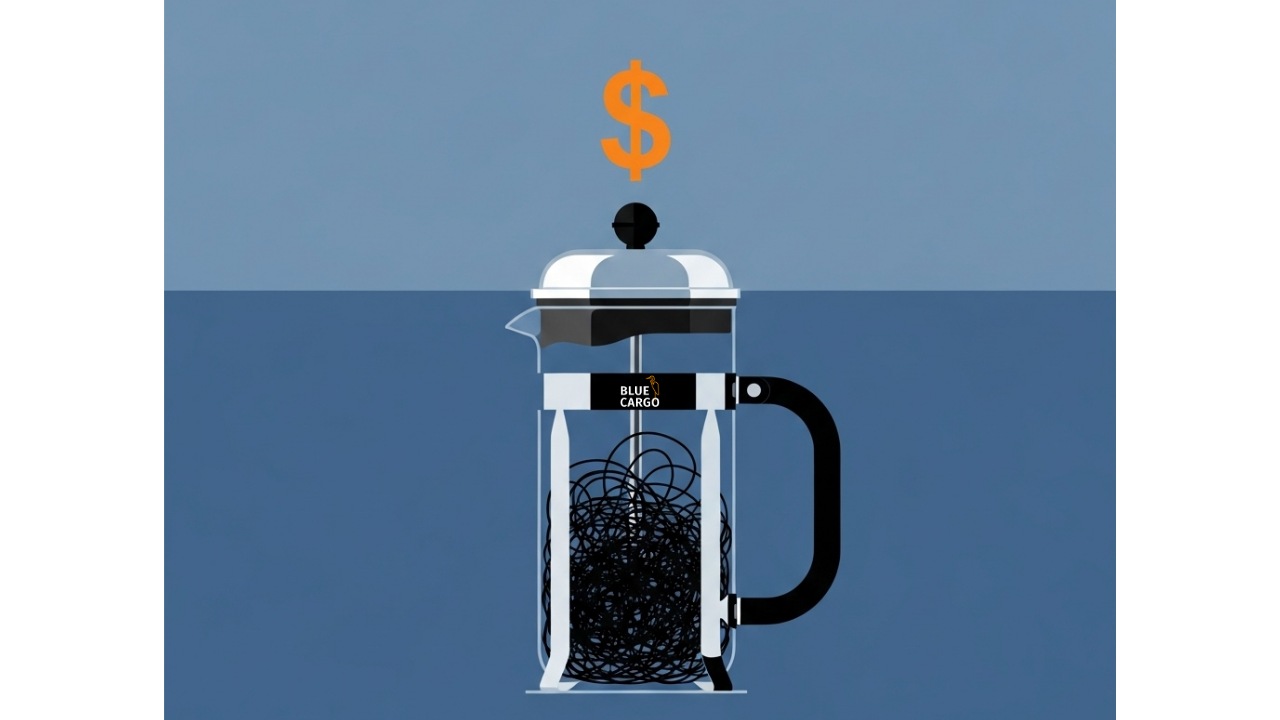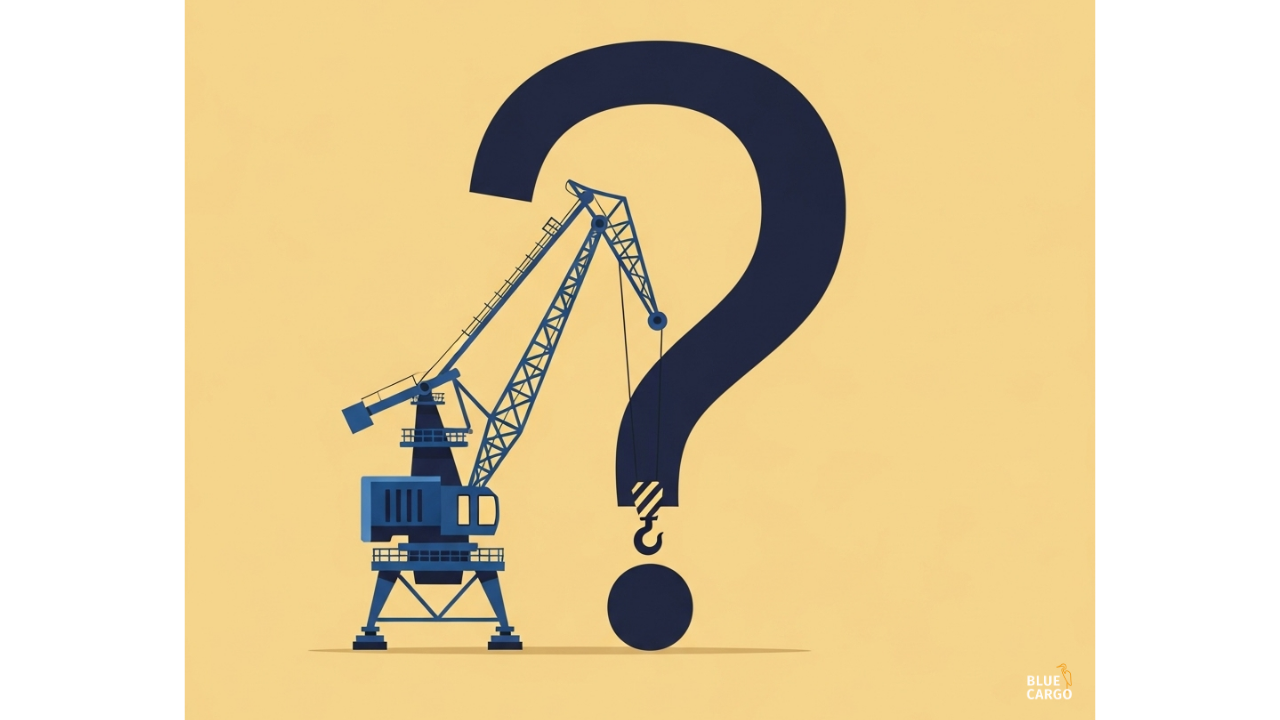.png)
☕ Margins on the Line: Why Cost Intelligence, Not Tariff Panic, Will Define H2 2025
Cargoccino, brewed by BlueCargo. Your bi-monthly bite-sized supply chain news to have with your favorite coffee or tea.July 8, 2025
The Tariff Noise Is Loud, But the Quiet Costs Are Louder

U.S.-Mexico tomato duties. EU copper tariffs. Reciprocal trade policies bracing for an August 1st shift. The second half of 2025 is starting to feel like a trade compliance treadmill.
And yet, tariffs aren’t what will sink your margins.
They’re just louder. More visible. Easier to blame. But the real threat to profitability this year isn’t in D.C. or Brussels. It’s buried inside your own invoice data: mischarges, late fees, miscoded surcharges, inconsistent vendor rates, and invisible line-item errors.
In a year where the freight market appears stable, cost accuracy, not volatility, will determine who hits their Q4 budget.
🚨 Tariffs Are a Known Risk. Your Own Cost Blind Spots Aren’t.
You already have a process for tracking duty changes. But how are you catching the day-to-day billing discrepancies that happen across every shipment, vendor, and port?
Let’s be clear:
- Tariffs impact 5–10% of your overall landed costs.
- Misbilled freight fees and penalties touch nearly 100% of your container flow.
Here’s what we’re seeing:
While executives are chasing tariff forecasts, millions in unnecessary costs are getting auto-approved in AP.
Think that’s dramatic? One Fortune 500 importer we work with discovered over $300,000 in incorrect detention fees within 90 days.
TL;DR:
Tariff panic is distracting supply chain teams from what they can control: freight invoice accuracy.
The EU & Copper Tariffs: A Preview of Downstream Cost Chaos

The new EU tariffs on copper, set to take effect on August 1, are already impacting importers across the electronics, home goods, and auto components sectors. Even if you don’t directly source copper, your Tier 1 and Tier 2 vendors probably do.
Why it matters:
- These tariffs create cost confusion: your vendors may pass along increases without transparency.
- Without structured invoice reconciliation, you have no way to distinguish between legitimate cost changes and convenient markup.
What Ops teams are doing now:
- Mapping affected SKUs and components
- Running freight audit checks for each vendor pre- and post–tariffs enforcement
- Creating a cost attribution heatmap to model cost impact accurately across categories
Walmart Is Building a Global Freight Machine. What About You?
Walmart has just announced that it’s exporting its U.S. supply chain playbook globally, scaling its logistics tech and AI-driven cost controls across new markets.
What does that mean for everyone else?
You don’t have their infrastructure. Or $20 billion in supply chain tech spend. What you do have is an opportunity to think differently about cost control, not just reactively auditing invoices, but building an intelligent Freight Audit into your strategy.
Tier 1 = Basic audits: Spot invoice errors
Tier 2 = SOA-level analytics: Pinpoint systemic issues by vendor
Tier 3 = BlueCargo Freight Audit: Forecast, prevent, and optimize total spend (Tier 1 + 2)

Most companies are stuck at Tier 1. But Tier 3 is where profit leverage happens, especially when margins are under siege from all sides.
Related reading: The SCM software market is booming in 2025 as logistics digitization accelerates.
Holiday Shipping Feels Calm. That’s What Makes It Risky.

Rates are flat. Port performance is solid. Even chassis availability is holding steady. At first glance, it looks like shippers finally have a “normal” peak season ahead.
But here’s the catch:
In a quiet year, you won’t have external disruptions to blame and your CFO will expect a flawless Q4 budget.
You will read in our latest breakdown that this year’s risks are subtler, and they’re hiding inside your own cost structures:
- Port fees and fuel surcharges are creeping up quietly.
- Vendor overcharges and inaccurate accessorials are slipping through.
- Your finance team may be forecasting off outdated baseline costs.
TL;DR: It’s not the waves that worry us this holiday season... it’s the steady leak of unnoticed billing errors.
Example:
A 2.5% average discrepancy rate on $8M in holiday imports = $200,000 in unclaimed value before Black Friday even hits.
Use Q3 to protect Q4:
- Audit your 2024 holiday cost performance
- Set vendor benchmarks now—before volumes spike
- Recalibrate how finance and supply chain define “cost alignment”
☕ What’s Brewing at BlueCargo? ☕

We’re building a better way to close the loop between shippers and vendors with a new release focused on SOA Reconciliation Results.
Stay Tuned!
Why it matters:
The fastest way to get costs under control is to align both sides of the table around the same truth. We’re making that easier… at scale.
Want early access? Reply to this post or reach out to our team.
☀️🎁 BONUS: Summer Supply Chain Trivia

Let’s switch gears for a minute.
Do you think you know logistics better than your Ops team? Put your freight brain to the test:
- Who’s considered the father of containerization?
- What does the Incoterm “FOB” stand for?
- What’s the maximum TEU capacity of the largest ship afloat in 2025?
- Which U.S. port handled the highest volume of containerized imports in 2024?
- What does BAF stand for in shipping cost structures?
- When did the Panama Canal expansion officially open?
- Which organization sets the official Incoterms® rules?
- What’s a blank sailing?
- Who were the top two U.S. trade partners by volume in 2024?
- What is a freight audit, and why is it suddenly a C-suite issue?
No Googling allowed.
💌 Want the answers? Click HERE - so you can re-use it later with your teams.
----
✅ Your H2 Cost Intelligence Checklist
If you're planning to make it through Q4 without budget regrets, here’s where to start:
- [ ] Run a freight invoice audit for Jan–June 2025
- [ ] Build a simple vendor scorecard by % discrepancy
- [ ] Identify your Tier 1 → Tier 2 freight intelligence gaps
- [ ] Ask BlueCargo for a reconciliation preview before Q4
📞 Want a walkthrough or custom insights for your org? Let’s talk.
---
Read all Resources Here.


